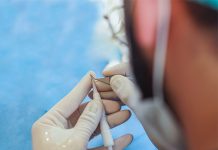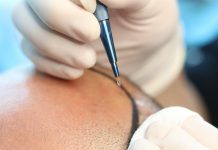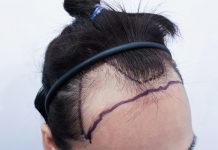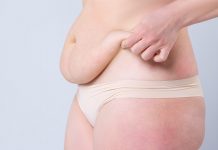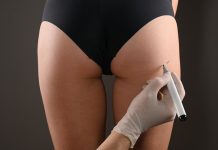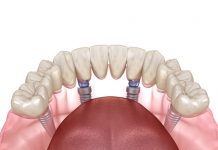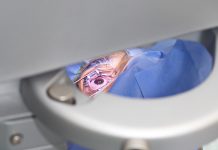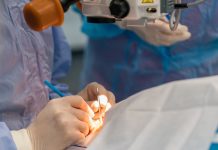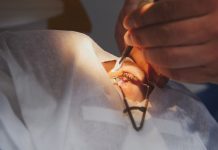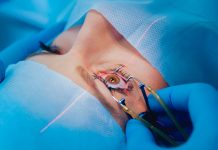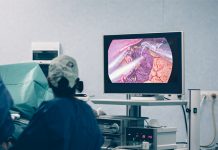Tummy Tuck (Abdominoplasty)
Tummy Tuck in Turkey, its average cost, types, Abdominoplasty procedure, and everything you must know about the skin tightening operation are explained.
Being overweight can be considered as the most common condition that prevents people from being healthy in our age. Many people try to lose weight and be closer to their ideal weight for being healthy. This is either because of wanting to love themselves or for other reasons. Their journey starts with having a balanced diet and supporting it with exercise. Finally, they achieve their target weight. However; the mirror that they face does not show the body they dreamed of. Even after, all the efforts they have taken. They try every exercise but cannot get rid of the sagging and loose skin in the specific areas. Especially their stomach.
Also, there are women who give birth and lose the perfect body they had before pregnancy. Furthermore, these patients are highly affected by the look they have psychologically. They end up wearing tight clothes, wrapping the loose skin with clothes tightly. They even wear corsets every day to hide the loose skin they have. Their social life, relationships, and sexual life are affected by their problem. They all want to achieve the look they will feel comfortable with. As a result, they will overcome other problems they face. Patients are highly desperate thinking about their loose skin. But, there is cosmetic surgery to help them achieve their dream body with a flat stomach shaped waist.
What Is Tummy Tuck?
Abdominoplasty, also known as a Tummy Tuck or Stomach Tuck, is a cosmetic surgery procedure. It is performed to make the stomach (abdomen) firm, flatter, and thinner. The focus of the Tummy Tuck surgery is skin and fat tissues that are stubborn to disappear. The causes of loose skin can be pregnancy or weight loss. They might not even disappear after exercise or a balanced diet. The surgery’s procedure is mainly removing the excess skin and the fat from the abdomen. Tummy Tuck is performed to tighten the muscle of the abdominal wall.
Tummy Tuck (Abdominoplasty) is one of the most used cosmetic surgeries according to The American Society of Plastic Surgeons (ASPS). Many people tend to think that Abdominoplasty is a procedure to lose weight. However, one of the “must-have” for that surgery is being a person with a healthy body mass index (BMI). Abdominoplasty is a procedure that should be taken after losing weight or giving birth.
Who Are Suitable for Tummy Tuck (Abdominoplasty)?
Tummy Tuck is the dream surgery of many people who suffer from being overweight or obese. However, one cannot have Abdominoplasty unless he or she has reached his/her healthy body weight. These are the qualifications of patients who can take Abdominoplasty:
- Being over 18 years old: There is no law stating that people under 18 years old cannot have cosmetic surgery. However, it should be legally accepted by parents. Ethically, doctors do not recommend people who are under 18 years old to have cosmetic surgery. Especially surgeries like Tummy Tuck. However, people should note that the more people get older, the more they lose the elasticity of their skin. As a result, the chance to get this surgery done decreases. We recommend you have the surgery before losing your skin elasticity.
- Patients who do not smoke heavily or do not have alcohol, drug use: If one is smoking and thinking of that surgery, the surgery will be postponed. It is likely that his/her doctor will tell the patient to stop smoking at least 6 weeks before the surgery. Smoking has got many side effects on our bodies. It increases our risk of chest and wound infection For this reason, the healing process might slow down.
- Patients who did not have blood clots before.
- One who does not plan to get pregnant in the future: After pregnancy, many women are not pleased with their looks. Even after doing exercises, some of them cannot get a flat stomach and they want to get Abdominoplasty surgery done. Having Tummy Tuck done after pregnancy is not a problem. If the patient is planning to have another pregnancy after the surgery, the surgery will not be permanent. Pregnancy is a state that women’s hormones and body change a great deal. Hence they are prone to gain weight, especially around the tummy area. As a result of pregnancy, the abdominal muscles will stretch. This means the skin will not be tight as it was after the surgery. Another important note that should be taken is that there is a great risk of developing a hernia. A hernia is the abnormal exit of tissue or an organ through the wall of the cavity. It mostly occurs if the patient gets pregnant after the procedure. After pregnancy, the skin will end up being saggy again. So doctors do not recommend women to have Tummy Tuck if they have future plans of getting pregnant.
- Knowing the risks of the Tummy Tuck surgery and being in a mentally and emotionally state to undergo the surgery: Tummy tuck surgery is a very tough surgery with a long healing process. Like every other surgery, Abdominoplasty has got many risks and complications that can occur during and after the surgery. The person who will undergo this surgery should be aware of every complication that might happen during the surgery. Also, risks that might happen after the surgery, every small risk should be considered.
- Having a suitable health record: In addition to all these qualifications, the patients should share their previous medical records. They should include any kind of previous surgery, treatment, illness, and conditions. For example, your doctor might not find it suitable if you have diabetes. People who have diabetes are most likely to have complications during surgery. They have got poor circulation and they are less strong to overcome bacterial infections. In addition to the higher risk compared to a healthy person, they can also have a slow wound-healing process. It is due to being prone to fight weakly against bacterial infections. The medical record should also include previous and current medical treatments (including prescribed and herbal drugs). Some of the medication taken can slow the healing process and might cause complications during the surgery.
- Having a healthy body mass index (BMI): Doctors do not recommend people who have a body mass index over 25. In some cases, it can be 30. After the surgery, the previous BMI of the patient reduces due to the removal of the excess skin.
- Having maintained a stable weight for at least 6 months: After the Tummy Tuck surgery, having major weight loss or weight gain might affect the results of the procedure. On account of the drastic weight loss or weight gain, the permanency of the procedure might reduce. Hence doctors recommend patients have a stable weight for at least 6 months. They should continue having a healthy living style after the operation.
- Having excess skin that has been stubborn to healthy diet and exercise: Many doctors do not recommend Abdominoplasty (Tummy Tuck) to people who haven’t tried exercising before. Because going under the knife is the last step to take. Doctors might reject the patient to have the surgery and expect the patient to exercise first.
- Having healthy and elastic skin that is suitable for the Tummy Tuck: The tone and strength of the patient’s stomach muscles are also significant. Some of the patients do not have suitable skin or tissue under the area for the Abdominoplasty. These might be caused by previous surgeries or biological reasons. Nevertheless, this should not upset people who do not have enough elasticity or healthy tissue. They can get specific treatments before the surgery to gain elasticity and create healthy tissue.
What Are the Types of Tummy Tuck (Abdominoplasty)?
There are several types of Abdominoplasty. Which type of surgery will be used depends on the patient. Tummy Tuck can differ due to having extreme excess skin or a small amount of skin. The doctor of the patient will decide on which type of Abdominoplasty suits best for him/her. In some cases, liposuction might be added to the surgery procedure. The types of Abdominoplasty are:
1) Full Abdominoplasty (Complete Abdominoplasty):
Full Abdominoplasty is an operation that focuses on the area under the chest and above the pubic line. This procedure is also referred to as Traditional or Standard Tummy Tuck. It is a procedure that includes several incisions(cuts). One incision is made in between two hips above the pubic area (also known as the bikini line for women). The next incision is to make the navel (belly button) free from the skin that surrounds the navel. Then separate the skin from the abdominal wall. After that, it reveals the muscles and facia to be tightened by sutures.
The excess fat and skin are removed. Then a new hole for the belly button is made to be stitched back in the hole. The excess fluid from the area mostly containing blood and fat is drained. The remaining skin is pulled together and stitched across the cut from hip to hip. That scarring is mostly higher in men than women to hide the scarring under pubic hair or underwear or swimwear. After the surgery, patients wear dressings or a pressure garment (corset) on his/her tummy or tummy control pants.
Stretch marks can also be removed during the Tummy Tuck surgery. It can happen if these marks are on the excess skin that is to be removed. After the surgery, patients experience at least one drop of the dress size. Full Abdominoplasty is more extensive than Mini Abdominoplasty. It includes above the belly button and below the pubic area (bikini line). This procedure is mostly recommended for people with previous multiple pregnancies. Besides, people with remarkable weight loss that cannot get rid of the excess skin. Exercise or a balanced diet does not help them get rid of the extra skin.
2) Mini Abdominoplasty:
Mini Abdominoplasty is also known as Partial Abdominoplasty. It is similar to Full Abdominoplasty; however, it focuses on the lower stomach (below the naval and above the pubic area) of the patient. There will not be any operation for both patient’s belly button and upper stomach.
After this Tummy Tuck operation, the belly button of the patient will be untouched; however, its shape might change due to the operation. In this Tummy Tuck procedure, an incision is made from hip to hip above the pubic area of the patient. Next, separating the skin from the abdominal wall. Then, the excess skin is removed from the body of the patient. Next, the skin remaining is pulled and stitched across the incision above the pubic area. This procedure is suitable for people with little excess skin.
In some cases, the navel might go lower than where it should normally stay. In complications like that, the doctor might change the operation to Full Tummy Tuck to prevent this problem. Another operation that can be done during the surgery is liposuction. The surgeon might use liposuction to reduce the distinction and to soften the transition area. After the Tummy Tuck surgery, the patient will have a scar above the pubic area. This scar is usually shorter than with a full tummy tuck.
3) Floating Abdominoplasty (Umbilical Float Abdominoplasty):
FAB Technique is a new technique that can be called an extended partial Tummy Tuck. The main difference of this procedure is focused on the belly button unlike Mini abdominoplasty; however, an incision is not made around the belly button. In this operation, the navel stalk is divided at its base on the abdominal wall. Then the skin is pulled down and the muscles are tightened and reshaped from sternum to bikini line. During the Floating Tummy Tuck procedure, the navel is floating above the muscles. Next, the navel is attached back to the abdominal wall, Finally, the excess skin is removed. It is appropriate for patients who do not have a lot of excess skin. Also, people whose belly button is higher and that can be moved only 3-4 cm. Liposuction can be added to the operation for better results.
4) Extended Abdominoplasty:
It is an operation that combines both complete abdominoplasty and lateral thigh lift. The incision is from the posterior axillary line ( beyond hip bones and above the pubic area). This procedure is suitable for patients who are heavier and with significant extra skin.
5) High Lateral Tension Abdominoplasty:
High Lateral Tension Abdominoplasty is a more advanced and refined operation compared to the others. This method is not just fixing the anterior abdomen but also proximal thighs, inguinal region, mons, and buttocks. It is said to make patients have better posture as well. Standard abdominoplasty mainly focuses on the center of the abdomen. That causes a tighter pull on the belly button and pubic area. It is called vertical pull. Nonetheless, High Lateral Tension Abdominoplasty includes both vertical and horizontal pull. For this reason, it creates a flatter and slimmer look. The waistline is defined better and helps to create an hourglass shape for women and a shaped look for men.
6) Circumferential Abdominoplasty (360 Tummy Tuck):
Circumferential abdominoplasty is an operation that combines both extended abdominoplasty and a buttock lift. It can also be explained as lower body lift and belt lipectomy. It is also a more refined method compared to a standard Tummy Tuck. Due to the fact that it is a difficult operation, many doctors do not prefer choosing that method. This operation is suggested for patients who have got massive weight loss. Also, people who have a great deal of extra skin both on the stomach area and back. During the operation abdominal area, flanks, pubic area, back, and thighs are flattened.
7) Lipoabdominoplasty:
Lipoabdominoplasty is a type of Tummy Tuck surgery. It can be referred to as Brazilian Tummy Tuck. It is a procedure that combines full Tummy Tuck and liposuction (also referred to as liposculpture.) The main focus of the surgery is to reshape the abdomen and central torso with liposuction. This method results in a more shaped body than a Complete or Mini abdominoplasty. During the operation, small incisions are made for liposculpture. Then, excess fat is removed from the abdomen and sides of the abdomen (flank) using a gentle device. After completing removing the excess fat, an incision is made below the pubic area, at the lower abdomen. The skin is pulled down, extra skin is removed and the remaining skin is stitched back.
Lipoabdominoplasty is known to cause better results in patients who want to have a small waist and flat stomach. Statistics show that patients have suffered more from complications caused by this method more than the other methods performed. The other feedback from patients with the previous lipoabdominoplasty is that the results do not have a natural look.
8) Endoscopic Abdominoplasty:
Endoscopic Abdominoplasty is a procedure that does not include skin tightening. It is only applied when the patient needs his/her muscles of the abdominal wall to get tightened. This method is applied through small incisions and with surgical instruments. However, Endoscopic Tummy Tuck can be recommended for people who have a small amount of extra skin on the abdominal area.
9) Fur-De-Lis:
The Fleur-De-Lis Tummy Tuck is for patients who have got extreme extra skin after significant weight loss. The typical characteristic of Fur-De-Lis Tummy Tuck is that they generally have a wide abdominal region compared to their hips. Compared to full tummy tuck surgery, fat tissue is removed from the abdominal area with the extra skin. The operation includes both horizontal and vertical skin tightening. The procedure has two cuts. One incision is along the patient’s pubic bone, and an incision runs along the middle of the patient’s abdomen. This vertical incision helps the surgeon to tighten both sides and the middle of the abdomen.
Combination of Procedures
An abdominoplasty can be combined with other operations during the surgery even though it is not preferred by cosmetic surgeons. Tummy Tuck is already a surgery with a long healing process. As a result, they suggest patients have one operation at once. However, there are cases that patients are offered to have multiple types of operations at once. These operations are liposuction, breast reduction, breast lift, Auttock lift, and arm lift.
What are the Risks of Tummy Tuck?
All of the Tummy Tuck surgeries have got great risks. There is always a possibility of complications during the surgery caused by many reasons. It can be related to the patient, the medical team performing the Tummy Tuck surgery. Complications can also occur because of medical tools and devices. When it is a life or death situation, it is easier to decide on taking the surgery or not. However, cosmetic surgeries are mostly done to make patients have their dream look. Abdominoplasty is one of those surgeries that has got a high-risk rate. It can be very serious or life-threatening, but every patient has got unique body and metabolism. As a result, those risks change from person to person.
While some suffer from many, some do not come across with any problems after the Tummy Tuck surgery. If you think of having an Abdominoplasty, you should consider its risks. You are going to have a lot of possible risks during and after the surgery. The cosmetic surgeon you consult for Abdominoplasty should inform every possible risk before getting ready for the surgery. The risks Abdominoplasty can cause are:
- Extra skin on the scar area (Dog skin).
- Wounds that do not heal or poorly heal.
- Keloid and hypertrophic (heavy scarring): Scarring after Tummy Tuck is inevitable but most of the scars can be healed with products or laser treatments. Some of the patients can have severe scarring after the surgery that might be visible even after some treatments.
- Seroma (fluid accumulation): Seroma is a complication that fluid develops under or around the incision area. The pocket of fluid that builds up under the skin. This usually develops under or around the incision site. To prevent or reduce its risk, the cosmetic surgeon places needles or syringes inside the incision. This treatment helps to drain the extra fluid.
- Suture rupture.
- Hematoma: It is the name for bleeding and blood collecting under the skin. If the Tummy Tuck surgery results in hematoma, further surgery might be needed to stop bleeding.
- Pain in the abdomen.
- Bruises.
- Skin loss.
- Breathing problems.
- Numbness in the area or loss of sensation in the skin: This results mostly after the nerves in the abdominal area getting damaged during the procedure. Even though they can be permanent, they mostly heal after a few months.
- Swelling in abdomen or legs.
- Asymmetry.
- Skin discoloring.
- Infection: It is one of the most serious risks of the Tummy Tuck surgery. It might be caused by both the procedure or by the patient’s wrong habits after the surgery. To prevent getting infected in the area, the patient should follow the steps his/her surgeon recommends after the surgery. If it occurs, these infections can be treated with some antibiotics, if not, another surgery might be needed.
- Fat necrosis (Losing the fat tissues in the operation are): This is caused by blood supply loss in abdomen tissues such as fat, skin. It might happen during the surgery owing to the disturbance of tissues. Smoking increases the risk of losing fat tissues. This is why cosmetic surgeons recommend patients quit smoking before surgery.
- Nerve damage.
- Blood clots developing in veins: After the Tummy Tuck surgery, patients are recommended not to minimize their physical movements to reduce the risk of getting blood clots.
- Pulmonary embolus (Blood clots in lungs).
- Excessive bleeding.
- Nausea and vomiting.
- Blood loss.
- Allergy to anesthesia or other complications related to anesthesia: There are many risks that might occur before and after the Tummy Tuck surgery. Choosing a significantly experienced cosmetic surgeon will decrease the possible risks. It is also important to choose a good private doctor or a clinic. As a result, they can follow the situations of the patients better. If you end up having any complications or unexpected symptoms after the Tummy Tuck surgery, you should immediately contact your cosmetic surgeon.
Getting Ready for Tummy Tuck
Abdominoplasty is a surgery that one can come across with serious complications. It can happen during and after the surgery. Therefore, to reduce the operation’s risks, there are some important tips before the Tummy Tuck surgery. These are:
- Reaching the ideal body weight and try to make it stable for at least 6 months for better results.
- Quitting smoking at least 6 weeks before the Tummy Tuck surgery. Nicotine can reduce the risk of poor wound healing. As a result, the patient should also make sure not to have nicotine replacement therapy before the surgery.
- Stopping to take contraceptive pills and aspirin 4-6 weeks before the surgery to prevent bleeding and blood clots.
- The area to have incision should not be shaved or waxed at least for 7 days before the Tummy Tuck operation.
- Having an exercise habit might help for the surgery; however, it is best to consult the clinic and ask about it.
- Not drinking or eating before the surgery (It is normally 6 hours.).
Procedure of Tummy Tuck
How long the Tummy Tuck surgery lasts depends on the surgery’s type and the patient’s condition. A full abdominoplasty (also known as complete abdominoplasty) can take from 1 hour to 5 hours. A mini-truck abdominoplasty (partial abdominoplasty) takes 1-2 hours. Brazillian Tummy Tuck surgery, 360 Tummy Tuck surgery, and High Lateral Tummy Tuck surgery take 4-5 hours on average. Before the procedure, the patient goes under a medical examination. This examination includes previous medical background, medicine that has been used before the surgery. Such habits as smoking, alcohol, or any kind of drugs are taken into consideration, too. Such examination is done to prevent complications that might occur. The procedure involves the following steps:
- Signing the consent form.
- Deciding on the area of the surgery and marking those areas.
- Anaesthesia: Mostly it is general anesthesia but it can be a local anesthetic with intravenous sedation.
- The abdominal area is cut for skin removal: The areas to be cut depends on the type of Abdominoplasty.
- Removal of the extra skin: The surgeon tightens the muscles on the abdominal wall and removes the extra skin. The surgeon can also remove fat tissues depending on the type of Tummy Tuck which is being applied.
- Stitching the incisions: After closing the incisions, the doctor might insert drain syringes or needles. This is done to prevent excess fluid from collecting under the skin.
- The patient’s stomach is wrapped by pressure garments or similar dressings such as corsets.
- The patient is taken to the ward after the Tummy Tuck surgery: The patient is waited to recover from anesthesia so he/she is taken to a private room. On average, patients stay in the hospital for 1-3 days. Meanwhile, the wounds are taken care of by the nurses. Different medical treatments can be made during that time. The cosmetic surgeon who made the surgery also checks the status of the wounds. This reduces the risk of any complications becoming severe.
Recovery
It is important to note that the healing process of Tummy Tuck surgery is a long process. As a result, it needs patience. It can be really painful and some unwanted complications might occur. The recovery process can take between 4-6 weeks and complete healing takes around 8 weeks. Patients wear corsets for up to 6 weeks. The first 3 days are spent in the hospital to make sure that the patient does not have any complications. A few weeks later another appointment is made to remove the stitches that remain from the Tummy Tuck surgery. If drains inserted in the abdominal area, they are mostly removed before the patient leaves the hospital. Some pain killers might be given by the doctors to be used during the healing process. In some cases, antibiotics are prescribed.
Having a healthy diet after Tummy Tuck surgery is important. The patient should have a balanced diet with vegetables and high-protein, low-sodium foods Getting dehydrated and caffeine should be avoided. After the Tummy Tuck surgery patients, mostly can be mobile but they should have movement limits to prevent any unwanted complications. These limits are:
- The patient should not drive at least 1 week up to 2 weeks before the surgery.
- The patient should be off work at least for 2 weeks if their work does not include physical activities.
- They should wait at least 6 weeks up to 12 weeks after the Tummy Tuck surgery to lift heavy objects.
- The patients should not have sex at least 3 weeks after the Tummy Tuck surgery.
Frequently Asked Questions About Tummy Tuck (Abdominoplasty)
How many sizes do you lose after the Tummy Tuck surgery?
Most women drop 2 to 3 sizes after tummy tuck surgery; however, it depends on the amount of extra skin the patient has. Patients with extreme extra skin can lose more than these numbers.
How long will Tummy Tuck results last?
The result of Abdominoplasty is permanent; however, gaining weight or getting pregnant might make patients to go back to the pre-surgery state. It is highly recommended to maintain a healthy living style after the surgery.
How much does it cost to get Tummy Tuck?
The pricing of Abdominoplasty changes significantly depending on the clinic, cosmetic surgeon, and the country. Another reason for prices to change is related to follow-up care, consultations, and the medical items used during the surgery. In South Korea, the minimum price is $3550 and the average price is $11000 and the maximum price is $24600. Tummy Tuck, in the United Kingdom, costs about £4,500 to £6,000. In Turkey, it costs around £950 to £4,500.
Is it worth having Tummy Tuck?
You look at the pictures of the models with flat stomachs. Sometimes to patients who achieved a flat stomach look after the surgery. As a result, you feel very convinced to get that surgery done. When it comes to achieving their ideal body, people tend to focus only on the positive results. However, they neglect negative ones. Hence, in order to avoid unwanted results, one should think in a realistic and reasonable way. You should not be a dreamer before deciding to get the Tummy Tuck surgery done. If you tried every option and Abdominoplasty is the only way out, you should get it. The surgery has got a painful and tough recovery process and a lot of risks. However, the majority of the patients who have got the surgery voted “Worth It” on a survey. This survey was led by RealSelf.
Are there any alternatives for Abdominoplasty?
Unfortunately, there are not any alternatives to abdominoplasty. Tummy Tuck patients are mostly people who cannot get positive results from exercising or liposuction. Hence we cannot suggest any similar procedure that can replace Abdominoplasty.
Is C-section before Abdominoplasty suitable?
As stated in the previous paragraphs, Abdominoplasty is highly preferred by women who had a pregnancy. Women who gave birth by C-Section (also known as Cesarean delivery) are interested in the surgery. Because after pregnancy, the skin can get loose. As a result, many women want to get their pre-pregnancy bodies back. It is suitable for them to get tummy tuck surgery after C-section. However, many doctors do not recommend getting Tummy Tuck immediately after C-section surgery. Because C-section is already a tough surgery itself. Having another serious surgery might postpone the healing process.
They recommend patients to be patient and get Tummy Tuck surgery after they are completely healed from C-section. The patient should consult with a board-certified plastic surgeon. Because it is important to learn if the patient is in a suitable condition for another surgical procedure. They should also consider that having a newborn baby will be exhausting and tiring. As a result, they might not be ready for another painful procedure.
How long Abdominoplasty surgery lasts?
Tummy Tuck can take between one to five hours depending on the areas being treated during the surgery and how much skin and fat are to be removed. The surgery lasts up to five hours. However, you will stay in the hospital after your surgery for one night in most cases.
Is Tummy Tuck a safe operation?
Yes. Many of us worry about our health when we are lying down under a knife for our beauty. All of the surgeries have got possible risks so does Tummy Tuck. If you are a suitable person for the surgery, it will decrease the risks. Not having certain medical conditions and following the rules of decrease the possible risks, the risks are reduced. As a result, you will not have life-threatening or serious problems. It is significant to choose an experienced surgeon for your Abdominoplasty. Because the more they are experienced, the more safe Tummy Tuck is.
Are the results permanent after Abdominoplasty?
Yes. The results from Tummy Tuck is permanent as loose skin is removed from the body of the patient. However, if the patient gains weight a great deal, the skin will stretch. After losing a significant amount of weight, the skin will be loose again. It might even become like it used to be before the Tummy Tuck surgery. It is important to maintain a healthy lifestyle and a regular exercise routine after Abdominoplasty. Because possible to gain weight if you do not have healthy habits.
During Abdominoplasty, a certain amount of fat tissues might be removed. This depends on where and who the surgery is being done. The patient might not develop fat after the surgery as it used to be. This is because of the removal of the fat tissues.
Can the patient exercise after Abdominoplasty?
In the healing process, patients should prevent having extreme physical movements. Therefore, they should not exercise until the healing process is completed. After the healing process, patients can start walking in a slow-paced way. Then gradually start doing other exercise movements under the control of their doctor.



